
Welcome to Ask Andy – your go-to column for quick, clear answers to all things Claritas. Whether you’re just getting started or you’re a seasoned user with a specific setup question, Andy’s here to help untangle the tech. This week’s question comes from a Windows user wondering if they can run Claritas on their PC. Let’s dive in…
Ask Andy…Can I run Claritas on a Windows PC?
Absolutely! While Claritas isn’t built as a native Windows application, it runs seamlessly thanks to Windows Subsystem for Linux (WSL)—a powerful, easy-to-configure virtual environment built right into Windows. With WSL, you can install a supported Linux operating system directly within your Windows setup, and from there, install and run Claritas.
Find out more about WSL here – https://learn.microsoft.com/en-us/windows/wsl/about
Installing WSL on your Windows 10 or 11 PC
There are two ways to install WSL, via the command line or the Microsoft APP store.:-
Command line method :-
You can now install everything you need to run WSL with a single command. Open PowerShell or Windows Command Prompt in administrator mode by right-clicking and selecting “Run as administrator”, enter the wsl –install command, then restart your machine.
This command will enable the features necessary to run WSL and install the Ubuntu distribution of Linux.
To remove an unwanted Linux distribution in the Windows powershell (administrator mode) run the command wsl -l -v to list the distro’s installed:-
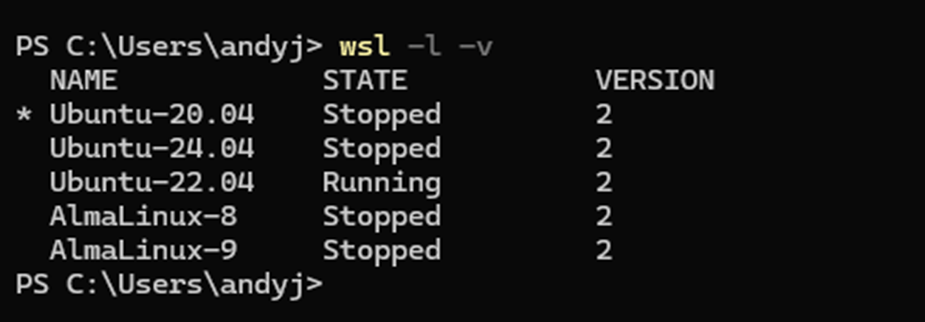
To remove a Distro use the command wsl –unregister Distro name i.e. wsl –unregister Ubuntu-20.04 and this will completely remove the unneeded Distro.
To find available Linux O/S’s run the command wsl -l -o
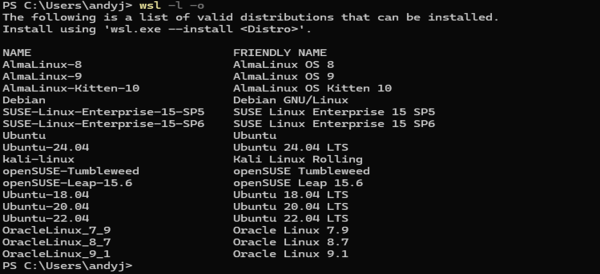
To install your preferred Linux operating system run the command wsl –install DistroName;
For example: wsl –install Ubuntu-24.04
Once installed the Linux O/S can be launched from the Windows APPS menu. The first time launching the Linux O/S you will be prompted for your username and a password (it’s up to you if you want to use the same username/login as for the Windows machine). Once you confirm the password you will be logged into the Linux environment.
App store method
Installing via the APP store is very easy :-
1. Open the Microsoft Store:
- Launch the Microsoft Store application on your Windows computer.
2. Search for “Windows Subsystem for Linux”:
- In the search bar within the Microsoft Store, type “Windows Subsystem for Linux” and press Enter.
3. Install WSL:
- Locate the “Windows Subsystem for Linux” app in the search results and click the “Install” button.
Once WSL is set up go back to the APP store and search for your preferred Linux O/S, for instance, search for Ubuntu 22.04 on the app store, click on the Get button and install.
When the O/S is installed launch from the Windows APPS menu. The first time launching the Linux O/S you will be prompted for your username and a password. (Again, it is your choice if you want to use the same username/login as for the Windows machine). Once you confirm the password, you will then be logged into the Linux environment.
Supported O/S’s for the current stable Claritas release are; Rhel8 & 9/Almalinux8 & 9/Ubuntu22.04 and 24.04 LTS. You can install more than one Linux O/S under WSL.
Installing Claritas on an Ubuntu O/S
If you are installing Claritas on an Ubuntu O/S (Supported versions are 22.04 or 24.04) Download the Claritas Linux tar ball onto your PC/Laptop under your Windows username Download directory.
Copy the tar ball file to the /home/username/ directory in the Linux environment. This is best done from the command line of the Linux O/S as follows:
- From the Windows app selection menu navigate to the Ubuntu O/S and launch it. This will bring up the command line interface as follows:
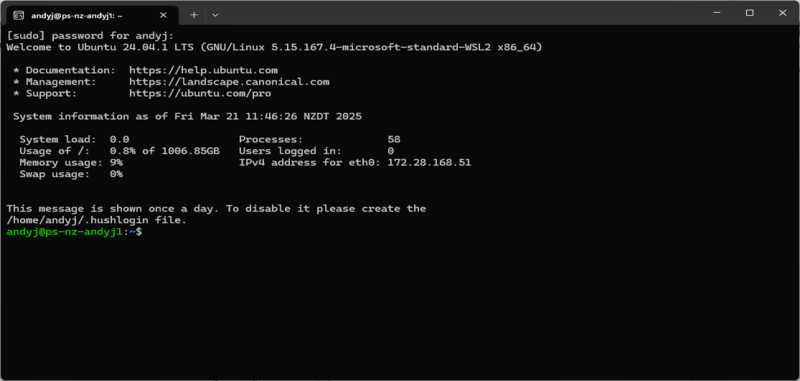
- From the command line, create a subfolder in your home directory to copy the linux tar ball into, command is mkdir stable17681, in this case it is identifies the folder as containing the stable release and version number17681.
- Then cd to stable17681, and copy the Linux tar ball into this folder using the cp command:
- cp mnt/c/Users/windows_username/Downloads/claritas_unix_stable_branch_rev17681_full.tar
- Unpack the tar ball with the command tar -xvf claritas_unix_stable_branch_rev17681_full.tar.
- Before installing Claritas make sure all the packages installed with the Linux o/s are up to date. To do this run the command sudo apt-get update – the installed lInux O/S is a snapshot of the operating system at the time the install package was created and so updating after installation is a good idea.
- Now install Claritas using the command sudo sh Install.sh.
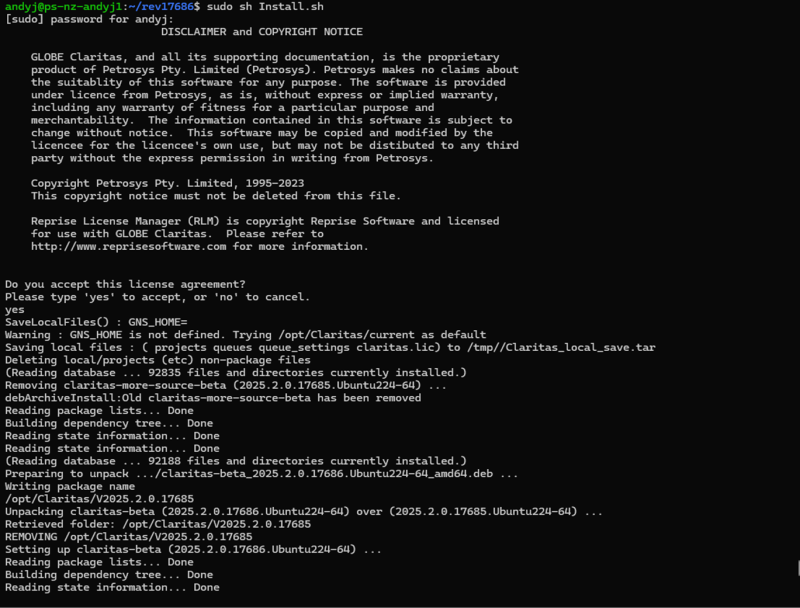
To install your preferred Linux operating system run the command wsl –install DistroName;
For example: wsl –install Ubuntu-24.04
Once installed the Linux O/S can be launched from the Windows APPS menu. The first time launching the Linux O/S you will be prompted for your username and a password (it’s up to you if you want to use the same username/login as for the Windows machine). Once you confirm the password you will be logged into the Linux environment.
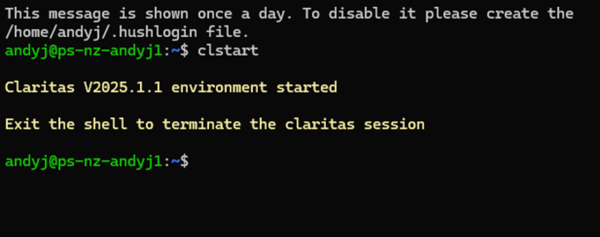
With the launcher and SeisCAT applications now running, you can import the license key if necessary and start to work with your seismic data.
Installing Claritas on an Almalinux O/S
If you are installing Claritas on an Almalinux O/S (Supported versions are ALmalinux 8 or Almalinux 9) Download the Claritas Linux tar ball onto your PC/Laptop, in your Windows usernames Download directory.
Then copy that tar ball file to the /home/username/ directory in the Linux environment and is best done from the command line of The Linux O/S as follows:
- From the Windows app selection menu navigate to the Almalinux O/S and launch it, and this will bring up the command line interface as follows:
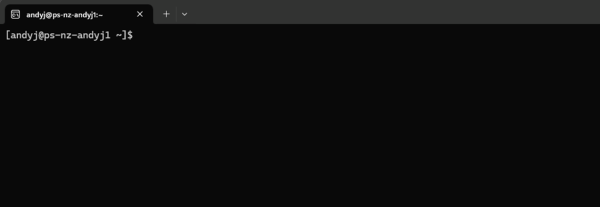
- From the command line, create a subfolder in your home directory to copy the Linux tar ball into, command is mkdir stable17681, in this case it is identifies the folder as containing the stable release and version number17681.
- Then cd to stable17681, and copy the Linux tar ball into this folder using the cp command like so – cp mnt/c/Users/windows_username/Downloads/claritas_unix_stable_branch_rev17681_full.tar .
- Unpack the tar ball with the command tar -xvf claritas_unix_stable_branch_rev17681_full.tar.
- Before installing Claritas make sure all the packages installed with the Linux o/s are up to date by running the command sudo dnf update – the installed Linux O/S is a snapshot of the operating system at the time the install package was created and so updating after installation is a good idea.
- Now we can install Claritas using the command sudo sh Install.sh.
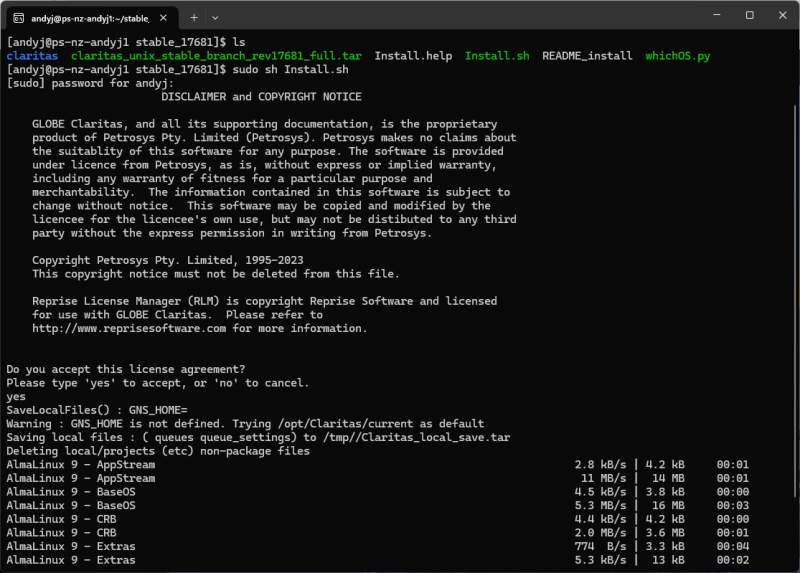
- Installation may take a few minutes as the packages Claritas is dependent on are downloaded and installed. After Claritas is installed there will be further python packages like numpy/scipy and scikit-learn are installed into the local environment.
- Once installation has completed close down the Linux shell (O/S) and relaunch it to make sure that the environment is correctly set up.
You can now start Claritas by typing the command clstart to switch to working in the local Claritas python environment, and then type the command launcher to start the Claritas launcher and SeisCAT applications.
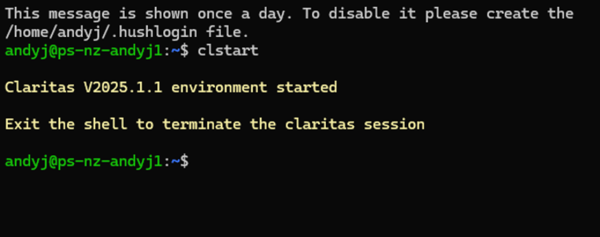
With the launcher and SeisCAT applications now running, you can import the license key if necessary and start to work with your seismic data.
Watch. Learn. Do.
If you have a question to ‘Ask Andy’ please get in touch and it could be our next feature.
GLOBEClaritas Enquiries
If you would like to know more or have questions please use the form to get in touch with one of our experts.


